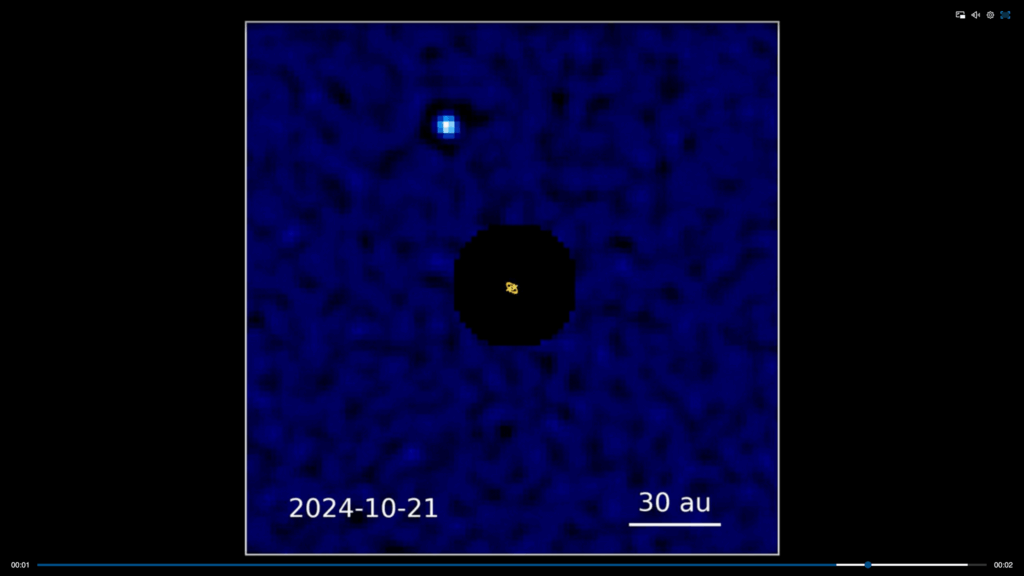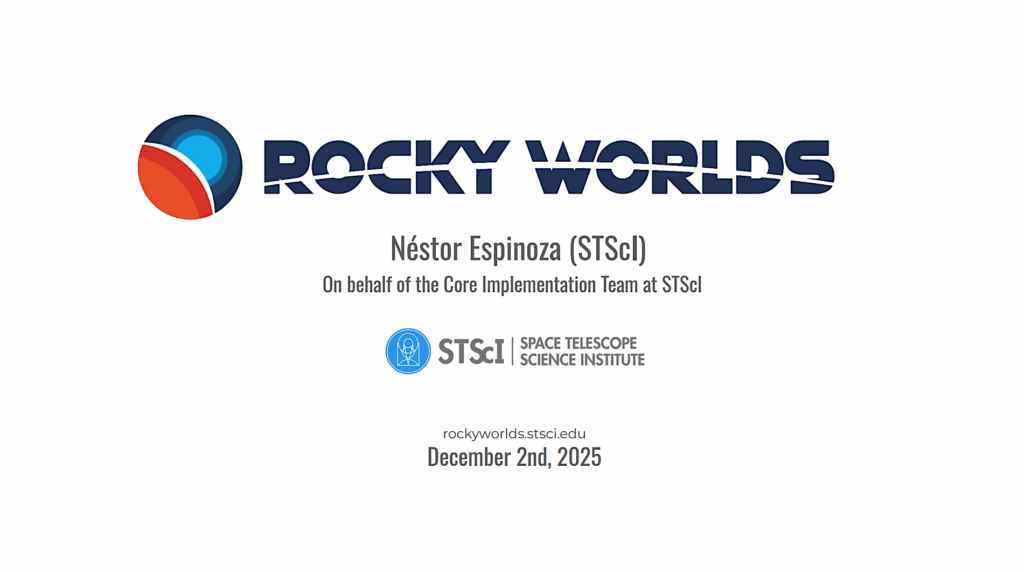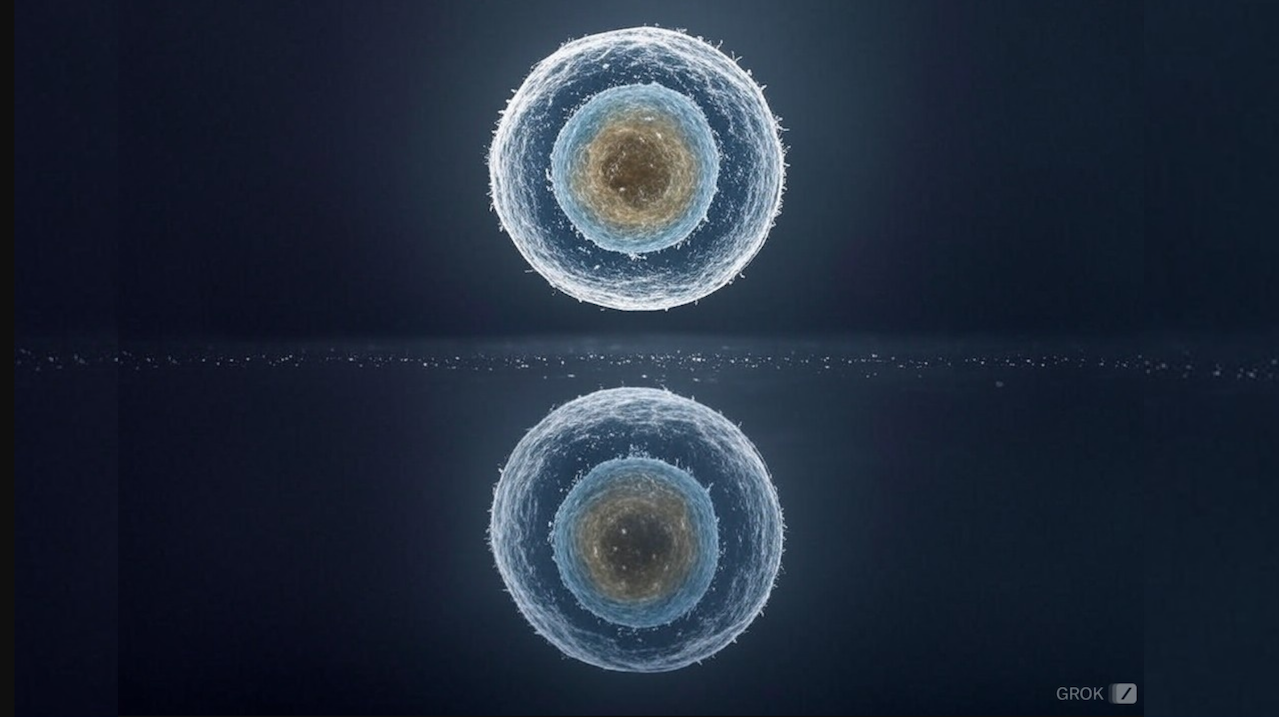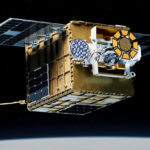Now Reading: Two Distinct Populations of Dark Comets Delineated by Orbits and Sizes
-
01
Two Distinct Populations of Dark Comets Delineated by Orbits and Sizes
Two Distinct Populations of Dark Comets Delineated by Orbits and Sizes
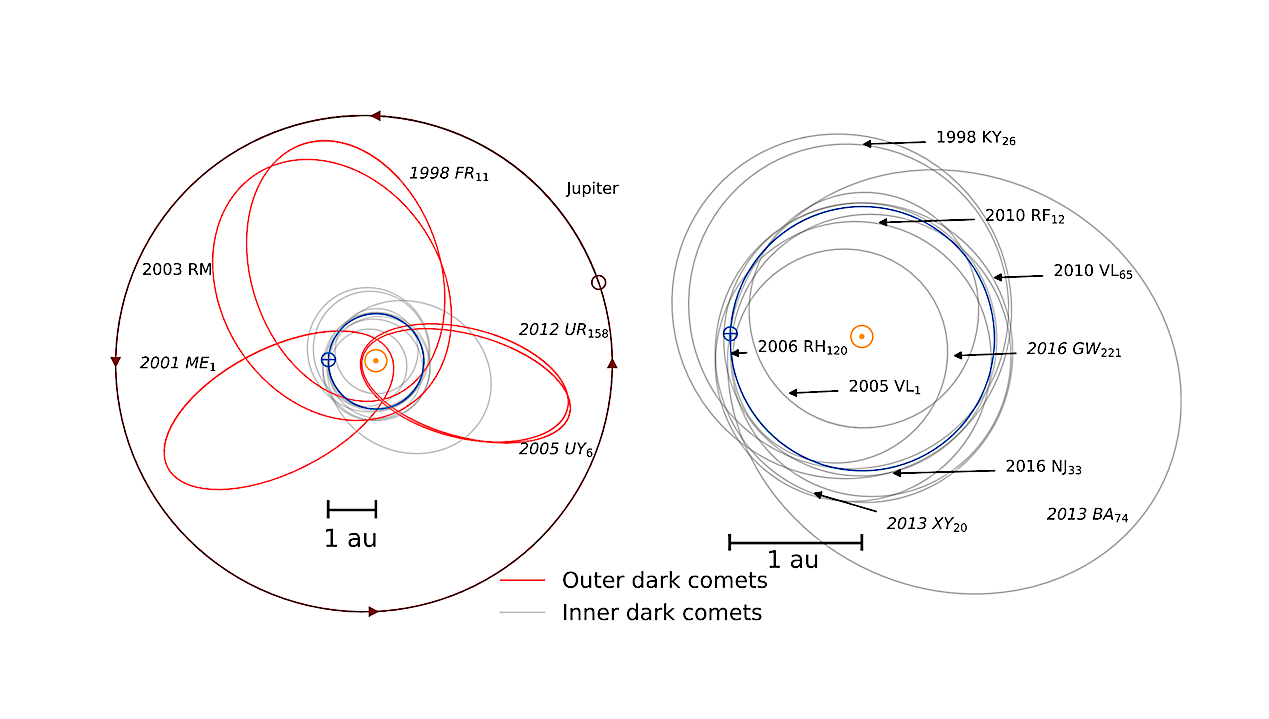

The orbits of the fourteen currently known dark comets, Jupiter, and the Earth. One orbital period is shown for each object starting on the vernal equinox in 2023 March, and the points represent the corresponding initial positions of the Earth and of Jupiter. The left and right panels highlight the orbits of the outer and inner dark comets respectively. Orbits of the newly discovered dark comets are labeled with italicized font, and the orbits of previously reported objects are labeled in roman font. –PNAS
Small bodies are capable of delivering essential prerequisites for the development of life, such as volatiles and organics, to the terrestrial planets. For example, empirical evidence suggests that water was delivered to the Earth by hydrated planetesimals from distant regions of the Solar System.
Recently, several morphologically inactive near-Earth objects (NEOs) were reported to experience significant nongravitational accelerations inconsistent with radiation-based effects, and possibly explained by volatile-driven outgassing.
However, these “dark comets” display no evidence of comae in archival images, which are the defining feature of cometary activity. Here we report detections of nongravitational accelerations on seven additional objects previously classified as inactive (doubling the population) that could also be explainable by asymmetric mass loss.
A detailed search of archival survey and targeted data rendered no detection of dust activity in any of these objects in individual or stacked images. We calculate dust production limits of ∼10, 0.1, and 0.1 kg s−1 for 1998 FR11, 2001 ME1, and 2003 RM with these data, indicating little or no dust surrounding the objects during the observations.
This set of dark comets reveals the delineation between two distinct populations: larger, “outer” dark comets on eccentric orbits that are end members of a continuum in activity level of comets, and smaller, “inner” dark comets on near-circular orbits that could signify a new population.
These objects may trace various stages in the life cycle of a previously undetected, but potentially numerous, volatile-rich population that may have provided essential material to the Earth.
Darryl Z. Seligman, Davide Farnocchia, Marco Micheli, Olivier R. Hainaut, Henry H. Hsieh, Adina D. Feinstein, Steven R. Chesley, Aster G. Taylor, Joseph Masiero, Karen J. Meech
Comments: 12 pages, 11 figures, Author’s version of Proc. Natl. Acad. Sci. Vol. 121 No. 51 published at this https URL
Subjects: Earth and Planetary Astrophysics (astro-ph.EP)
Cite as: arXiv:2412.07603 [astro-ph.EP] (or arXiv:2412.07603v1 [astro-ph.EP] for this version)
https://doi.org/10.48550/arXiv.2412.07603
Focus to learn more
Journal reference: Proc. Natl. Acad. Sci., 121, 2024
Related DOI:
https://doi.org/10.1073/pnas.2406424121
Focus to learn more
Submission history
From: Darryl Seligman
[v1] Tue, 10 Dec 2024 15:43:53 UTC (1,008 KB)
https://arxiv.org/abs/2412.07603
Astrobiology
Stay Informed With the Latest & Most Important News
Previous Post
Next Post
-
 012024 in Review: Highlights from NASA in Silicon Valley
012024 in Review: Highlights from NASA in Silicon Valley -
 02Panasonic Leica Summilux DG 15mm f/1.7 ASPH review
02Panasonic Leica Summilux DG 15mm f/1.7 ASPH review -
 03From Polymerization-Enabled Folding and Assembly to Chemical Evolution: Key Processes for Emergence of Functional Polymers in the Origin of Life
03From Polymerization-Enabled Folding and Assembly to Chemical Evolution: Key Processes for Emergence of Functional Polymers in the Origin of Life -
 04How New NASA, India Earth Satellite NISAR Will See Earth
04How New NASA, India Earth Satellite NISAR Will See Earth -
 05And Thus Begins A New Year For Life On Earth
05And Thus Begins A New Year For Life On Earth -
 06Astronomy Activation Ambassadors: A New Era
06Astronomy Activation Ambassadors: A New Era -
07SpaceX launch surge helps set new global launch record in 2024













